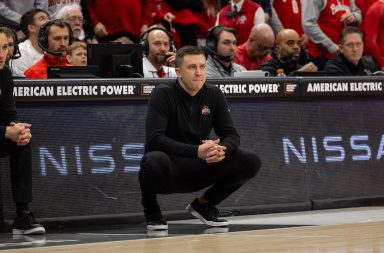After interviewing Tom Burns at the Perkins Observatory, he was, as usual, reaching for the stars.He was in the process of hooking up his car battery to a homemade rocket so he could give the kids from the Grove City Parks and Recreation program a first-rate demonstration. Just another hectic day for the director of the observatory, as he prepared for one of the more than 300 demonstrations he and his staff do annually for schools and civic groups.But there is a chance that Burns’ reach may be halted. Ohio State recently notified the observatory and its owner, Ohio Wesleyan University in Delaware, Ohio, that it will discontinue its annual $100,000 fee for joint use of the observatory as well as the original Perkins telescope, now in Flagstaff, Ariz. The annual fee has served as the main source of funding that allows Perkins to operate and maintain the facility. In a July 8 letter to the Ohio Wesleyan board of trustees, OSU president E. Gordon Gee cited limited financial resources and the decision to discontinue use of the Flagstaff telescope as the reasons for ending OSU’s 64-year association with Perkins. The deal will end July 31, 1998.Ohio State committed $6.4 million last year to focus its astronomy research efforts on the controversial Mount Graham telescope. Although they will no longer use the observatory primarily for research, OSU faculty will continue to present their “New Vistas in Astronomy” series for the rest of the year. However, Burns and Ohio Wesleyan are committed to preserving the observatory. “The long term health of Perkins can’t depend on institutions like OSU alone,” Burns said.Burns said that Ohio Wesleyan has started efforts to raise a $2 million endowment as part of a long-term effort to preserve the observatory. To date, the university has raised $400,000.In a prepared statement, Ohio Wesleyan president Tom Courtice said, “While we are disappointed, the Ohio State decision does provide new opportunities for Ohio Wesleyan, an opportunity to build a permanent endowment for Perkins Observatory.””We will find a way!” Burns said emphatically.One way is an “adopt-a-brick” program that Burns started as part of the effort to remodel the observatory’s aging front steps. Another way, started last year in anticipation of OSU’s decision to end funding, is to charge for exhibitions.Burns said that they started charging groups small donations, depending on group sizes, for shows.The observatory’s support staff is made up entirely of volunteers, mainly from the Columbus Astronomical Society. Their dedication is illustrated in the many handmade exhibits, such as the handcrafted model of our solar system, the “make your own rocket” program, and the model of our neighboring galaxies that is made up of over 10,000 fiber optic cables.Perkins does have an interactive computer display network, but even that is done on a shoestring.”We get our computers by casing all the garage sales. Usually, one breaks down a week,” Burns said.Why is Tom Burns so committed? In a recent article for Ohio Wesleyan Magazine, he wrote, “A few years back, at one of our many weekend stargazing sessions, I trained the Schottland Telescope on Earth’s sister planet, the moon. A seven-year-old child stepped up to the eyepiece, her eye made radiant by the incandescent glow streaming from the telescope. And for the ten-thousandth time, I could see the craters of the moon reflected in a child’s eye.”


